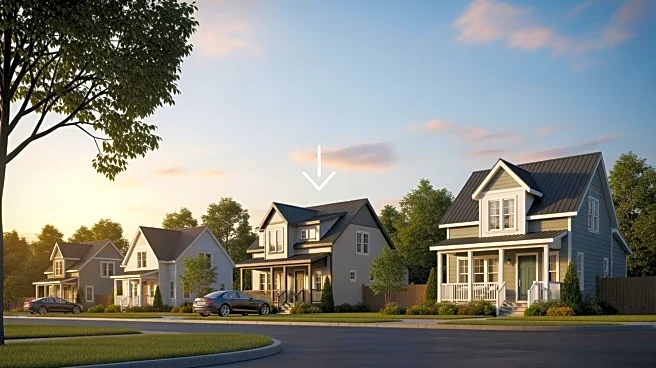What's Happening?
Home prices across the United States are beginning to stabilize, yet they remain high, even as more properties enter the market. Near record-high mortgage rates are contributing to the unaffordability of homes for many buyers. A slight increase in mortgage rates can
significantly raise monthly payments, prompting potential homeowners to look beyond expensive urban areas, especially those who can work remotely. Data from Realtor.com's Cross-Market Demand Report reveals where people in Erie are searching for homes. The report is based on page views of active listings during the third quarter of 2025, excluding international viewers. Notable areas include Oil City, PA, with a view share of 1.2% and a median listing price of $184,975, and Pittsburgh, PA, with a view share of 17.0% and a median listing price of $254,950.
Why It's Important?
The shift in homebuyer interest from urban centers to more affordable regions reflects broader economic pressures and changing work dynamics. High mortgage rates are a significant barrier to homeownership, affecting the real estate market and economic stability. As buyers seek more affordable options, this trend could lead to increased demand in less expensive areas, potentially driving up prices in those regions. The ability to work from home further supports this shift, as individuals prioritize affordability over proximity to urban workplaces. This trend may influence local economies, real estate markets, and urban planning strategies as demand patterns evolve.
What's Next?
As mortgage rates remain high, potential homebuyers may continue to explore more affordable housing markets. This could lead to increased competition and rising prices in these areas, impacting local economies and housing availability. Real estate agents and developers might focus on these emerging markets, adjusting strategies to cater to the growing demand. Additionally, policymakers may need to address housing affordability and accessibility, considering the implications of remote work on urban and suburban development. Monitoring mortgage rate trends and their impact on homebuyer behavior will be crucial for stakeholders in the real estate industry.
Beyond the Headlines
The trend of expanding home searches beyond urban cores highlights the evolving nature of work and lifestyle preferences. Remote work capabilities allow individuals to prioritize living environments that offer better affordability and quality of life. This shift may lead to long-term changes in urban planning, transportation infrastructure, and community development. As more people move to suburban and rural areas, there could be increased demand for services and amenities, influencing local government policies and investment priorities. Understanding these dynamics is essential for anticipating future shifts in housing and economic landscapes.













